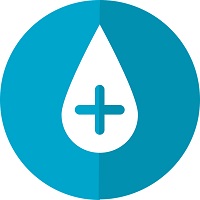Acupuncture Theory
An Introduction to Acupuncture: Acupuncture is an ancient form of health care that originated in China more than 2,500 years ago. Acupuncture has been practiced throughout the Asian world for many centuries, but was virtually unknown in the West until the late 1900's. Since the 1970's acupuncture has been soaring in popularity throughout many parts of the Western hemisphere.....
Book an Appointment
Through the use of extremely fine needles, acupuncture works by manipulating the flow of Qi in the body, which is energy (life force) that is present in all living things. According to acupuncture theory there are 12 main meridians through which the Qi (invisible energy) and blood flow.
Western medicine also acknowledges that the body contains an invisible energy system. The Western explanation for energy involves ATP synthesis, the Krebs cycle, mitochondrial function, etc. The goal of acupuncture is to regulate qi and blood flow. The relief of stagnation improves circulation and results in greater health for the individual. While the Eastern and Western medical traditions define energy in different ways, they are both referring to the same chemical and physical processes.
The Energy Channels (12 acupuncture meridians):
Within the scope of Oriental medicine there are twelve pathways, also known as channels or meridians. These meridians correspond to the internal organs of the body. For instance, there is a liver meridian, a heart meridian, a gallbladder meridian, and so on. In each of these meridians, the Qi can become stagnant, excessive, or deficient. A diagnosis of stagnant Qi means that there is a blockage or excess of energy which can cause a variety of symptoms. The symptoms are relative to the organ system that is blocked, but might include pain, inflammation, headaches, high blood pressure, depression, or menstrual imbalances. A diagnosis of deficient Qi means that there isn't enough functional energy within a given organ system to perform its necessary duties. For instance, chronic diarrhea and fatigue can easily be related to a deficiency of Qi in the spleen and may lead to such disharmonies as low energy, gas, bloating, and foggy thinking.
What is Acupuncture Therapy?:
A typical acupuncture treatment involves inserting needles into specific acupuncture points, which are located on the meridians where Qi is said to gather. By using small hair-thin needles to manipulate the flow of Qi on a given meridian, stagnant Qi can be dispersed and deficient Qi can be tonified. Resultingly, the symptoms that correspond to these energetic imbalances can naturally improve. There are 365 acupoints on the 12 meridians, along with numerous ‘extra points' that are located throughout the body. There are also microsystems such as the ear, eye, nose, and hand which contain acupuncture points that can treat the whole body. Because each practitioner's style and specialty are unique, some acupuncturists will use these specific areas regardless of the nature of the patient's complaints.
Let's talk about those Needles:
The needles can vary in size, but are usually surprisingly thin (generally about the size of a human hair). Most acupuncturists use single-use needles that come sterile from the factory and are thrown away after use. The needles can have either a metal or plastic handle, and can range in length from a centimeter to several inches. Longer needles can be used to access hard to reach areas of pain such as pain that is lodged deep in the hip socket. Modern acupuncture needles are filiform meaning they are one solid piece of metal that has no gaps or holes (as opposed to being welded or soldered). Special needles are used for ear, hand, and face needles... these needles are designed to be less painful depending upon the area of insertion.
How Does Acupuncture Work?:
From a Western biomedical perspective, acupuncture has been shown to release the neurotransmitter serotonin, noradrenalin and Beta-endorphins, opiate-like substances made by the brain. Serotonin balance is essential for emotional and mental health and has been linked to healthy eating patterns, sleeping patterns, and the degree of pain in the body. Beta-endorphins are analgesic anti-inflammatory endorphins that are responsible for the ‘runner's high', which is why acupuncture can induce instantaneous feeling of calm and well-being.
Does Acupuncture Hurt?
In general acupuncture should be a relaxing and relatively pain-free experience. At times the initial insertion will be felt by the patient, but there should never be an occasion where the patient experiences pain throughout the duration of the treatment. Acupuncture can cause feelings of dull achiness, heaviness, tingling, heat, and increased sensation around the area needled. These sensations are actually a good sign - a positive prognosis - that indicate balance is being restored to the body. Usually these sensations are accompanied by a deep feeling of relaxation and tranquility. Many patients report feeling so relaxed after treatment that they had to drink some water and ‘get their bearings' before they were permitted to drive. This deep relaxation tends to stay with the patient longer through successive treatments, and can be seen as a measurable sign of progress. If the patient has a serious objection to needles, there are many treatment alternatives including Tuina (Chinese medical massage), acupressure, Chinese herbs, and Chinese nutrition. These alternative therapies are often sufficiently powerful to replace the acupuncture. Many patients feel some initial apprehension about their first acupuncture treatment, but are shocked by how little they feel upon needle insertion.
What to look for in an Acupuncturist:
The field of Oriental medicine is broad and includes not only acupuncture but also Chinese Nutrition, Chinese medical massage (Tuina), Qigong, Chinese herbs, Guasha, Cupping, Moxibustion, and more. In addition there are many different styles of acupuncture, and many different schools of thought, so you can expect each acupuncturist to be quite unique. Genuine Chinese acupuncurists tend to use bigger needles and stronger stimulation, while Japanese style of acupuncture encourages hair-thin needles that are barely felt upon insertion. Some acupuncturists specialize in scalp acupuncture which is thought to be most effective at treating stroke related motor dysfucntion, while other practitioners focus on auricular acupuncture (acupuncture of the ear) that can relieve feelings of drug and chemical dependancy. Korean style acupuncture focuses on hand needling, while other practitioners prefer to use traditional Chinese medicine which is perhaps the most widely researched segment of Oriental medicine.
In addition personality is an important thing to consider - upon meeting them do you feel like you are a good match to your acupuncturist? Just as yin and yang are very different from each other, not every patient will be suited to every acupucturist. The most important factor is whether you feel comfortable with your practitioner, because without a certain degree of trust its unlikely that you'll get the healing you're seeking. Once you feel comfortable you should commit to a series of treatments - not just one visit. Acupuncturists are not miracle workers and like your physical therapist they're probably going to ask you to come in several times before expecting results. That's not to say that one treatment can't work wonders, but if that happens for you then consider yourself lucky. Give the acupuncturist the chance he or she deserves by commiting to five or ten treatments, and don't skip visits! Each treatment builds upon the next, and acupuncture is a system based on incremental gains, so skipping visits can lead to diminished results. After three or four visits you should definitely be feeling a difference, which should give you the confidence you need to continue following up on care.
Foundations for Optimal Health:
Optimal health. We all want to have it, but very few of us are anywhere close to achieving it. This is because, unfortunately, health is not a high priority for most of us until we've become diseased. Even more so, most of us don't even know how to define optimal health. Our medical model teaches us that health is the absence of disease, but health is much more than this. There are millions of people who don't have a diagnosable disease, but are still in poor or mediocre health. Traditional Chinese medicine is known as a preventative medicine, which means it is focused on preventing disease before it occurs in the first place. Unlike your Western doctor your acupuncturist will recognize minor symptoms like bloating and moodiness to be signs of disharmony that can be corrected. Rather than allowing bloating to progress to something more serious (like diverticulitis or irritable bowel syndrome) a good acupuncture practitioner will encourage you to progress ever closer towards the path of optimal health. And unlike your western doctor you don't need to be "sick" to come in for regular acupuncture care. Prevention should always be the first line of defense, and correcting a disease before it starts is much easier than correcting a disease that's reached a critical stage.
Tagged: Fundamentals of Chinese Medicine and Acupuncture Theory
Comments (0) • Replies (0) • Posted: 6/2/2019
Log in to post or reply to comments....
Latest News:
Latest Articles:
- Acupuncture Theory
Fundamentals of Chinese Medicine - Chronic Immune Dysfunction
How is your immune system holding up to modern day life? - Chinese Herbal Medicine
Treats a wide variety of problems - Blood Deficiency in Chinese Medicine:
Common signs and symptoms - Stem Cells: Hope for the Future?
Insights into the latest stem cell therapies.





